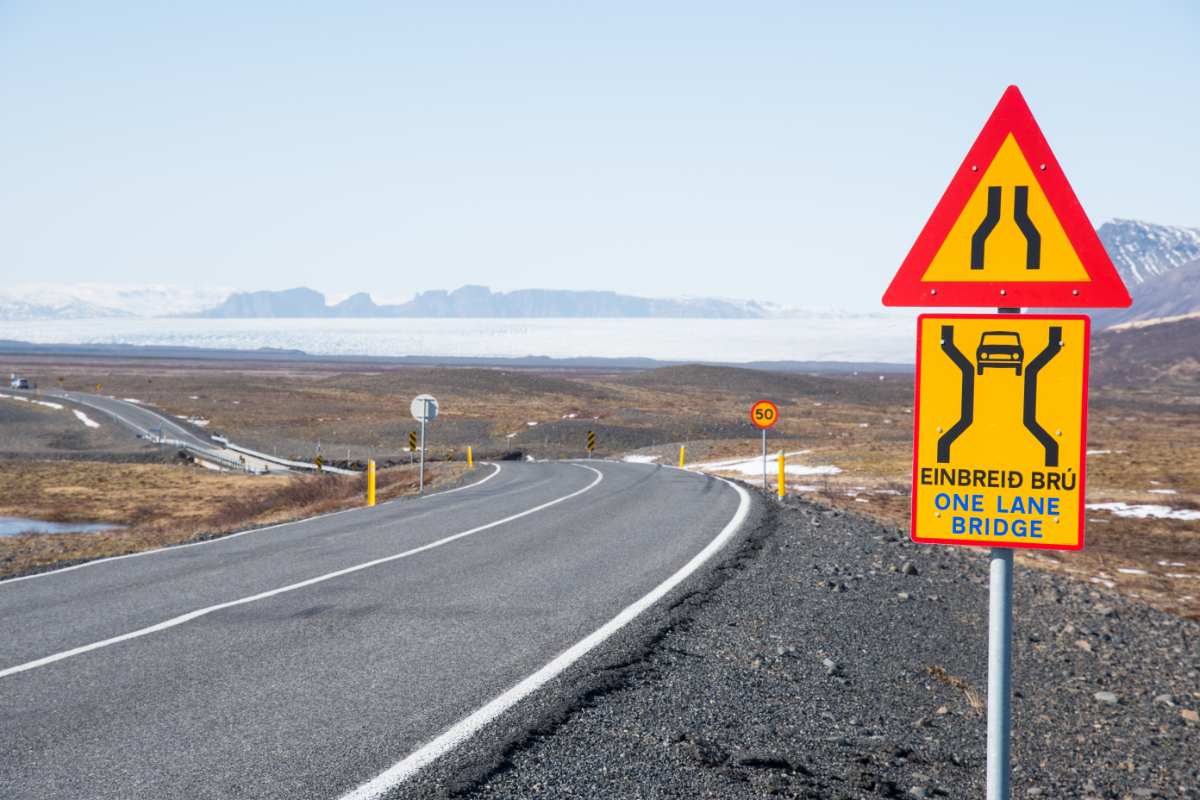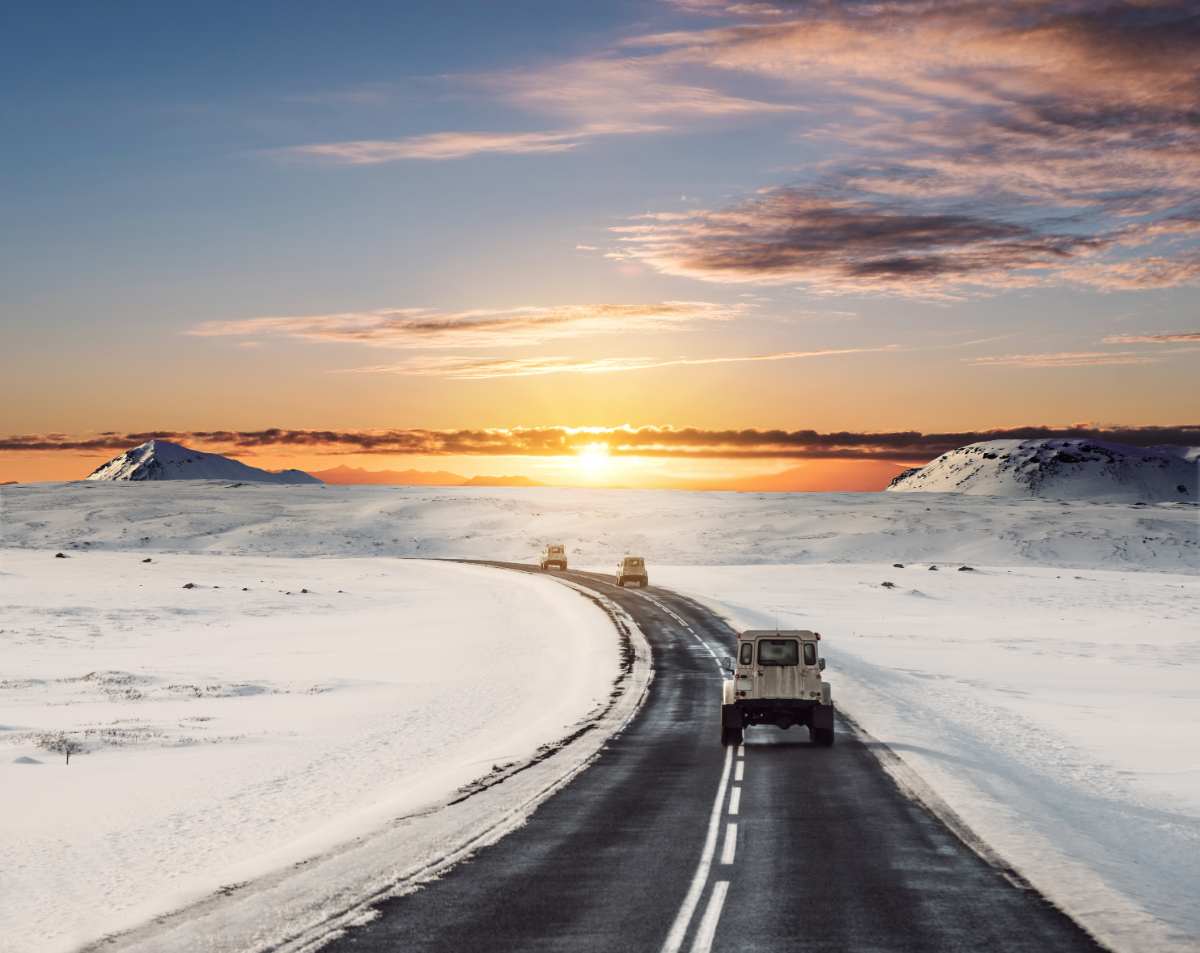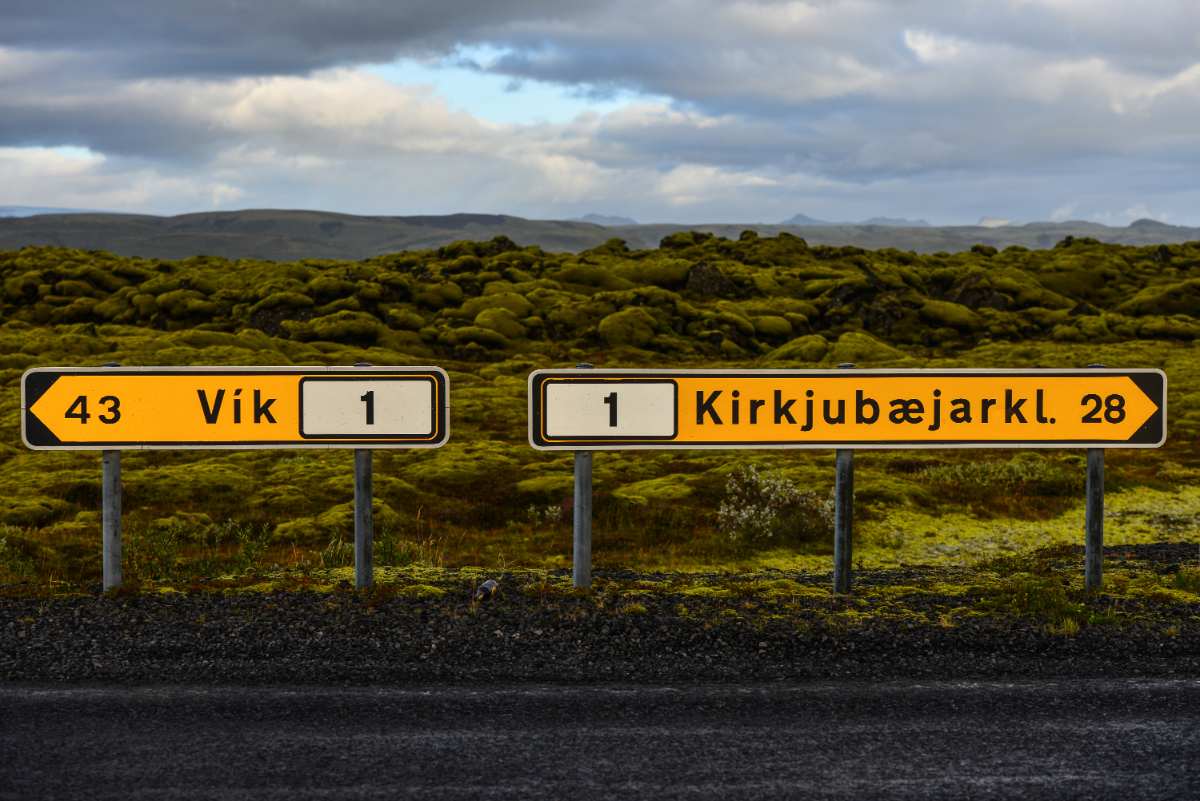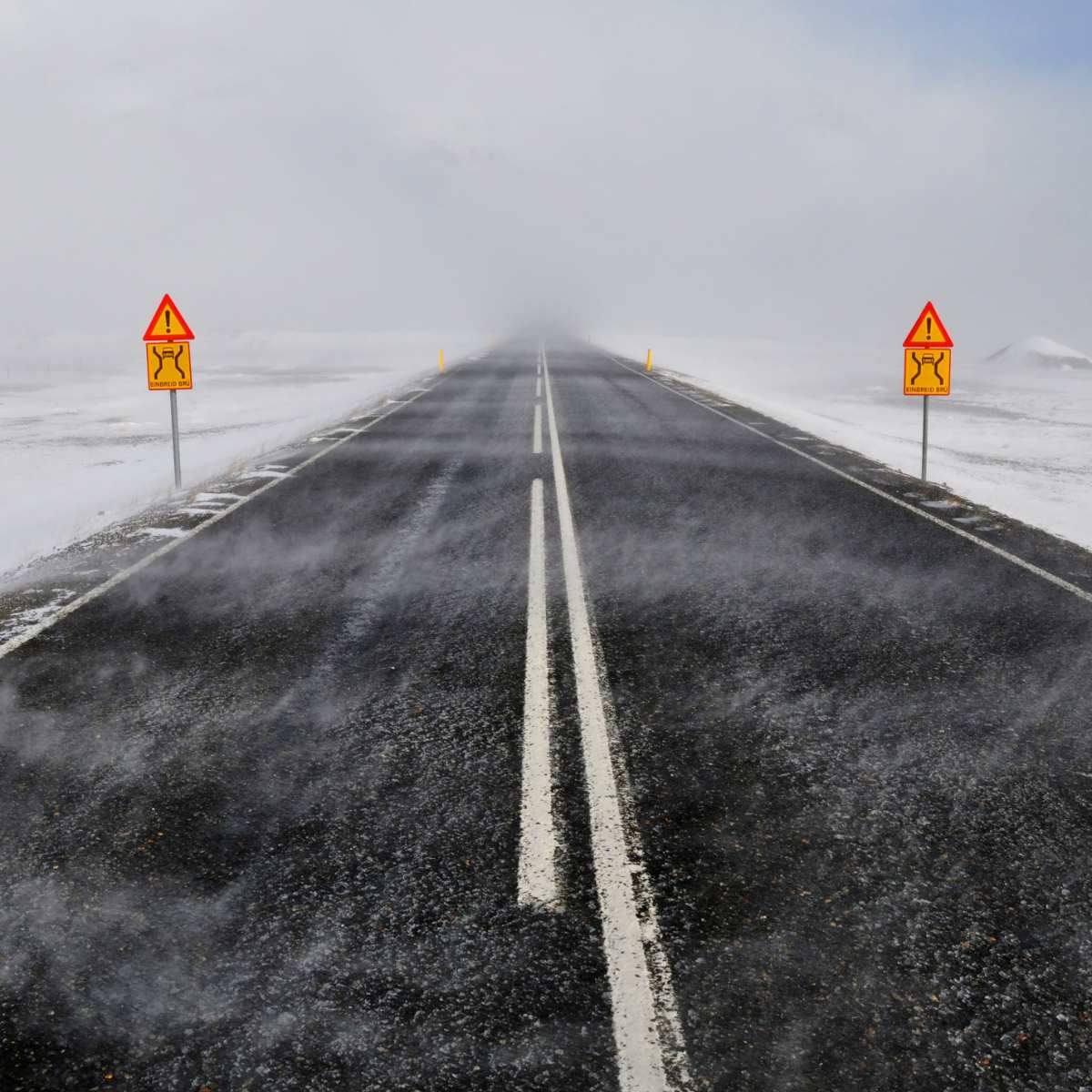The basic driving rules in Iceland won’t differ much from what you will encounter in other countries. There are, however, a few special cases that might catch you off guard that are good to know. The most essential ones being the low speed limit, seasonal restrictions on certain roads, and strict phone laws.
Whenever you go abroad for a nice holiday and want to be at the helm of your travels, hiring a car and hitting the roads is more or less a must. However, driving in a foreign country comes with its own challenges, since you can’t be sure that the rules are the same as back home. Luckily, driving rules in Iceland are easy to understand when you have the basic facts down, which we have compiled for you in this article.
Driving in Another Country
Before we drive into the basics of driving in Iceland, we need to make sure to get the basics of the basics out of the way.
To drive in any safe country, you need to have a valid driver’s license, and you would be wise to also bring an International Driver’s Permit (IDP) with you. It basically vouches for you to have a valid driver’s license. It will always make any officer, governmental official, or car rental agency feel at ease in any situation. It shows that you’re taking things seriously in this country.
Knowing that the legal driving age in Iceland is 17 years old is also important. However, many rental companies require drivers to be at least 20 years old. In some regions of the world, you’re allowed to drive when you’re 16 (or even younger). Still, you must still adhere to the driving rules in Iceland when driving there.
Another basic thing you need to know is that everything will be in another language. Far too many people are surprised to find out that traffic signs and information are not in English or their home language in other countries.
In certain cases, some traffic information will be in the local language as well as in English. Luckily, Iceland does have some information in English in important places. Also, most signs are quite self-explanatory when you see them, since they’re made to be easy to understand.

Lastly, you should look up which system of measurement your destination country uses before you leave. Iceland, for example, will use the metric system. That includes kilometers as a measurement for distance and kilometers per hour as a measurement for speed. For Americans and Brits, especially, this is important knowledge.
Can I drive in Iceland with a US license?
Driving in Europe as an American is, in general, fairly straightforward. Given that Iceland is part of the European Union, this makes everything much simpler as the American driving license is valid.
Basic Driving Laws in Iceland
If you come from any western country, you will likely recognize most driving laws in Iceland. The basic rules are pretty simple, but there are some things that are commonplace and worth repeating:
- Wearing a seatbelt is mandatory: Driving with a seatbelt on is not optional, it’s the law. Don’t try to talk yourself out of that, it’s a safety matter and everyone needs to adhere to it.
- Headlights are mandatory while you’re driving. It doesn’t matter if it’s light outside, and you can see just fine without them, the headlights must be on for your and others’ sake.
- Stopping and parking on the Ring Road is not permitted: You’re not allowed to stop on a highway unless it’s an emergency. This might be allowed in other countries, but when driving on Ring Road 1, or any other highway, you’re not allowed to stop without a really good cause. Not even if it’s a quick stop “just to take a picture” or something similar.
- Don’t drink and drive: The driving rules in Iceland state that you’re drunk driving if you have more than 0.02% alcohol in your blood. That equates to less than half a pint of beer or simply a small glass of wine. It’s easier (and safer) for everyone to simply take a cab, or bus, or stay over if you want to have a couple of drinks.
- Use hands-free: Prop your phone up to use as a GPS because you’re not allowed to use your phone and drive at the same time.
For those of you wondering “what side of the road do they drive in Iceland?” the answer is that the right side is the right side in Iceland (we couldn’t resist).

Driving Rules in Iceland
There are many driving rules in Iceland that might be new or odd to foreigners, so we’ve compiled some of the ones that are good to know. One very important rule in Iceland that needs to be adhered to, regardless of where you are, is that you’re not allowed to drive off-road. Take to the F-roads if you want to be in nature, but even then, you need to stay on the marked roads.
Iceland Speed Limit
You will notice that there aren’t any major highways in Iceland that you would see on any of the continents. The driving laws in Iceland state that the maximum speed limit you will come across is 90 kilometers per hour (roughly 60mph). Other than that, you’re only allowed to drive a maximum of 80 kilometers per hour on gravel roads in rural areas. In urban areas, the limit is 50 kilometers per hour, and 30 kilometers per hour on residential streets.
Going over the speed limit will result in heavy fines, and any fines you get will be sent to the car rental place. That place will likely charge you an extra fee for handling that fee, so in the end, it won’t be worth any speeding.
Primary, Secondary, and Local Access Roads
Outside the highlands and mountain passes, Iceland only has three types of roads that can be identified by the number of digits they have in their name:
- Double-digit roads are primary roads in Iceland. These are often in close proximity to Ring Road 1 and are used as the main transport routes in their respective area.
- Triple-digit roads are secondary roads. Often longer roads that are complementary to the primary roads in the area.
The local access roads are often roads to local farms or simply unofficial roads that are maintained by locals rather than the Icelandic Road Administration. You are unlikely to drive on any of these on your travels, so they won’t matter that much to you. Ring Road 1 is the only road that has a single digit in it, but it is considered a primary road.

F-Roads
When it comes to driving rules in Iceland, the F-roads might have one of the most important rules for your safety. Don’t drive on them unless you meet the requirements. The driving rules in Iceland state that you’re not allowed on the F-roads unless you have a 4x4 vehicle. Also, you can only drive there when and where the roads are open for traffic.
The F-roads in Iceland go through the mountains and highlands and are only open for a period of the summertime. These roads are often extensions of the primary and secondary roads and are the perfect routes if you want to drive in nature. However, make sure to check the official website of the Icelandic Road Administration to find out when the roads open.
Driving the F-roads before they are open will be a violation of the driving laws in Iceland. Be sure it will end with a hefty fine and possible permanent destruction of mountain flora.
Driving Safely in Iceland
Simply navigating the road and adhering to the driving rules in Iceland is not enough when driving around in this mystical country. Making sure you have a great time is just as important, and nothing makes a trip more fun than knowing you are safe the entire time. Knowing the do’s and don’ts of driving responsibly in Iceland might be the difference between a good and a bad memory.
Season and Weather
The weather in Iceland is notoriously volatile and will catch you by surprise if you’re not ready for it. Keeping an eye on the national weather website is a good start to getting an idea of what the weather is going to look like for the coming few days. Even though this is not one of the official driving rules in Iceland, it’s a common-sense rule that all Icelanders are familiar with.
When you plan your trip, however, you should make sure to check what the different seasons in Iceland bring with them. Many unwanted situations can be avoided if you are completely in the clear with what you expect when driving in Iceland.

Road Conditions
Apart from checking the weather, you will likely also have to check the current road conditions. One of the unofficial driving rules of Iceland is to always check ahead when you’re out on a long drive. Iceland has an incredibly developed information system for the roads, and you can easily check the road conditions on the Icelandic Road Administration’s website.
Driving in Iceland
The basics for driving around in Iceland are now covered, and you can rest easy knowing that you are well-prepared to face the roads on your Iceland trip. We suggest taking a look at which car to rent in Iceland as the next step on your journey to explore this amazing island.
Once you leave Reykjavík, driving is arguably the best way to get around Iceland. In the capital, the bus service is extensive and frequent, but there are no trains here to take you on longer journeys. You could fly domestically, but by driving you give yourself greater freedom. The freedom to stop and take pictures and to take all the snacks you can fit into your car. You also have the freedom to head up to the highlands, which are only reachable by car.
But with these freedoms come responsibilities; namely, you are responsible for learning Iceland’s traffic laws, some of which may be very different than your own. When renting a car in Iceland, you should first make sure you understand the main differences between driving in your country and in our island.


 By
By


